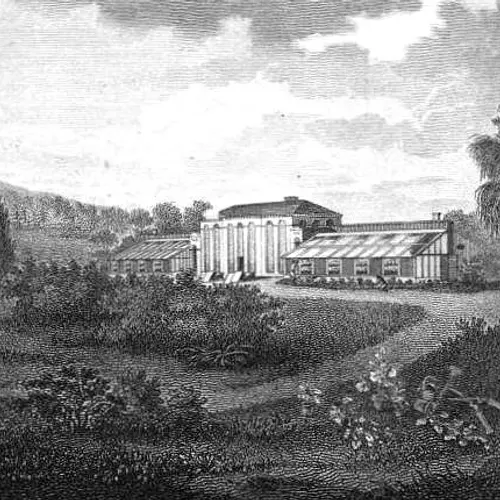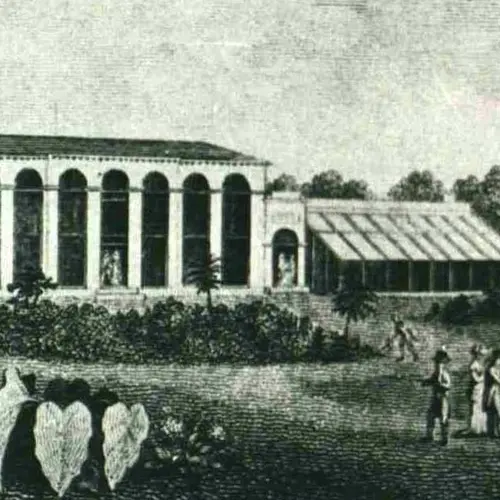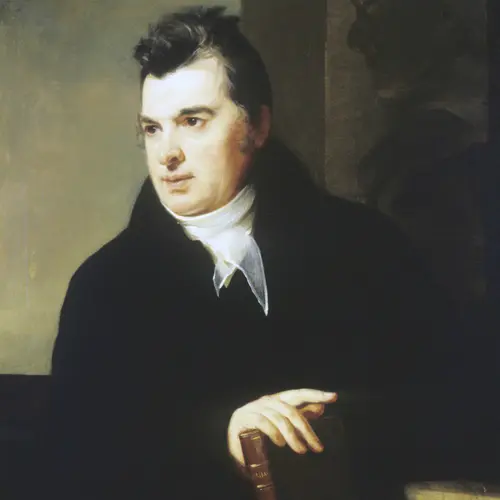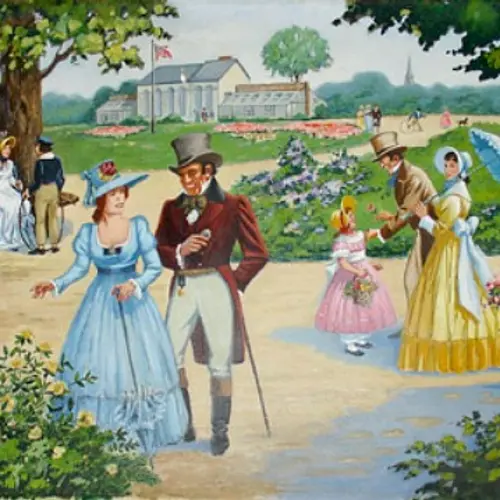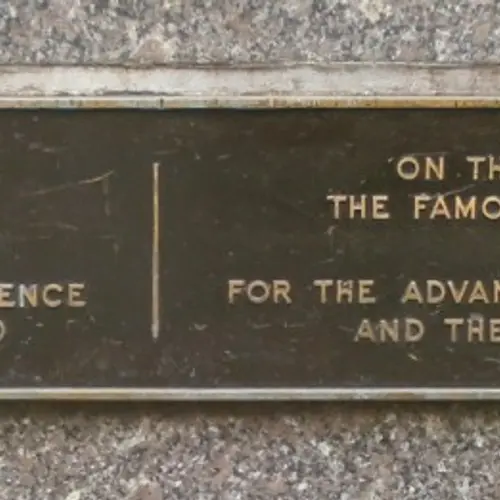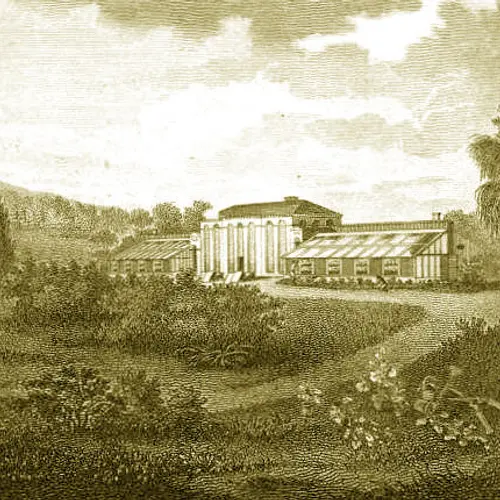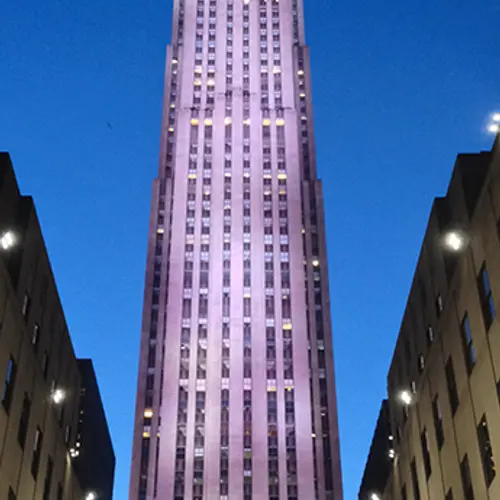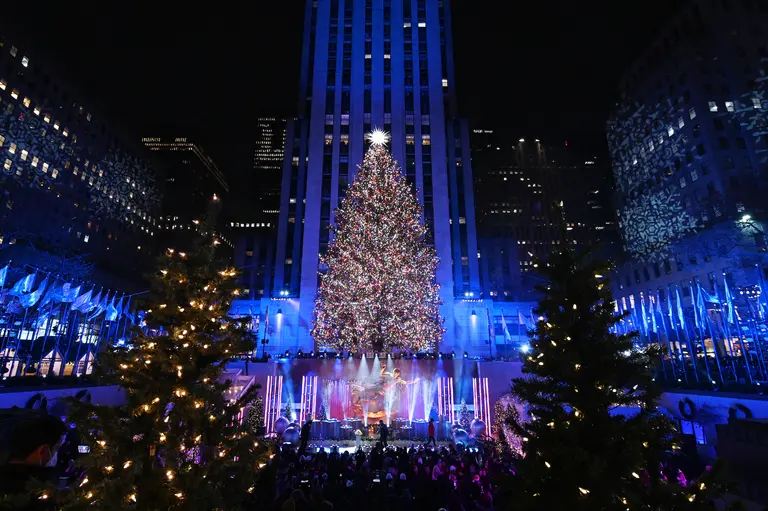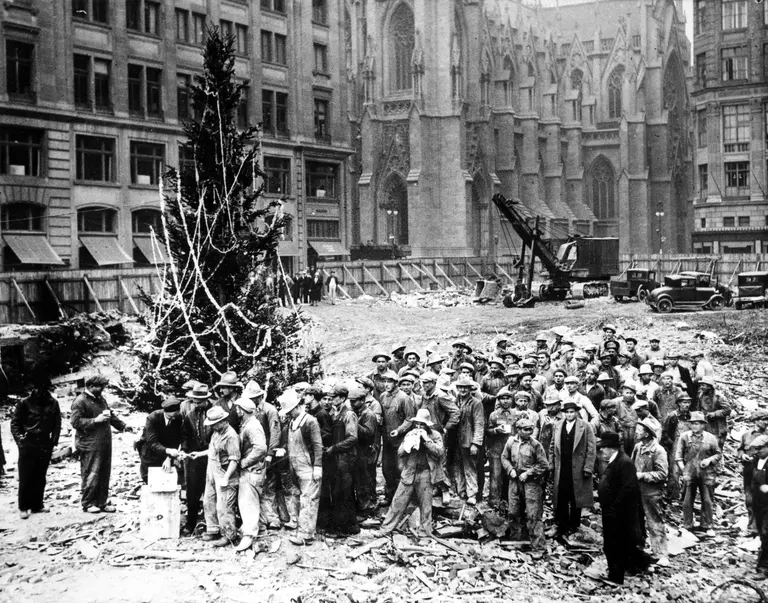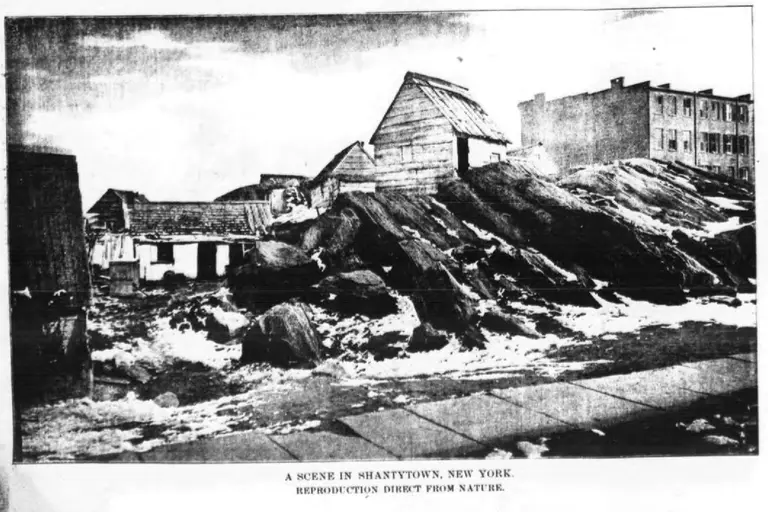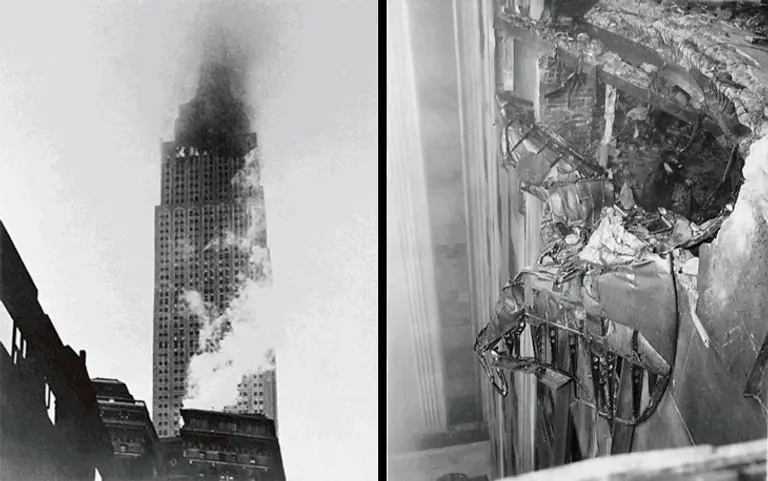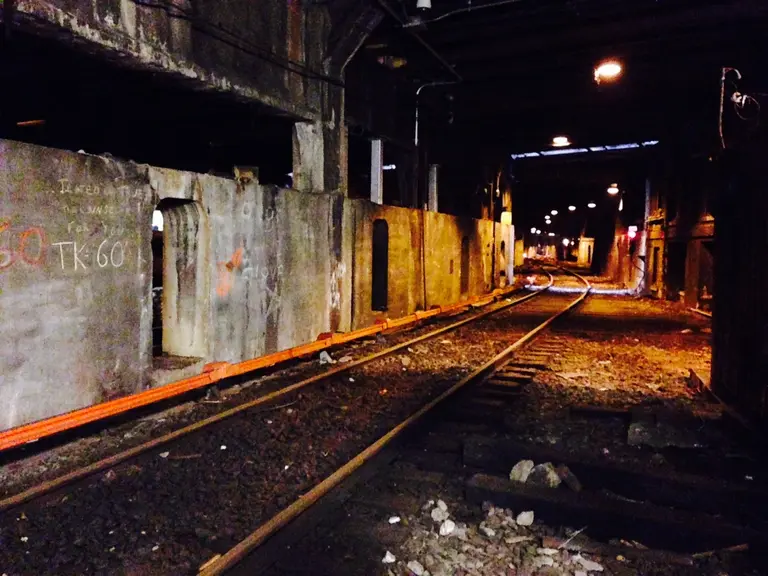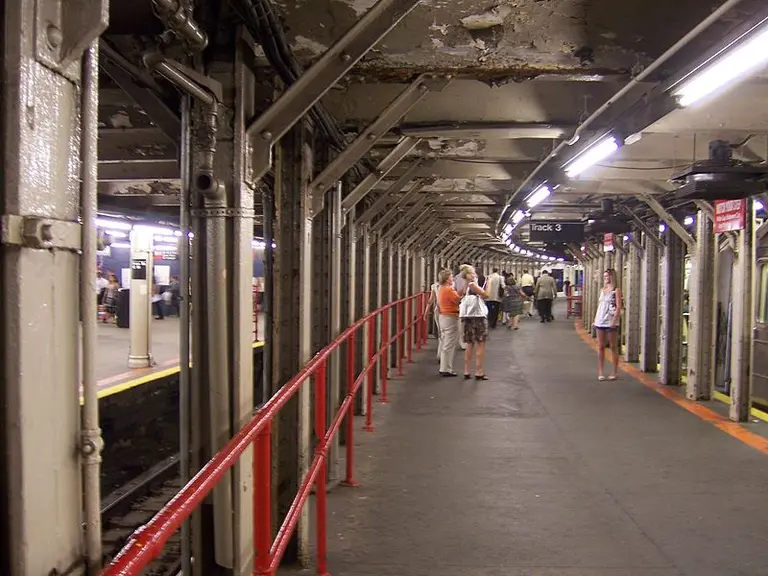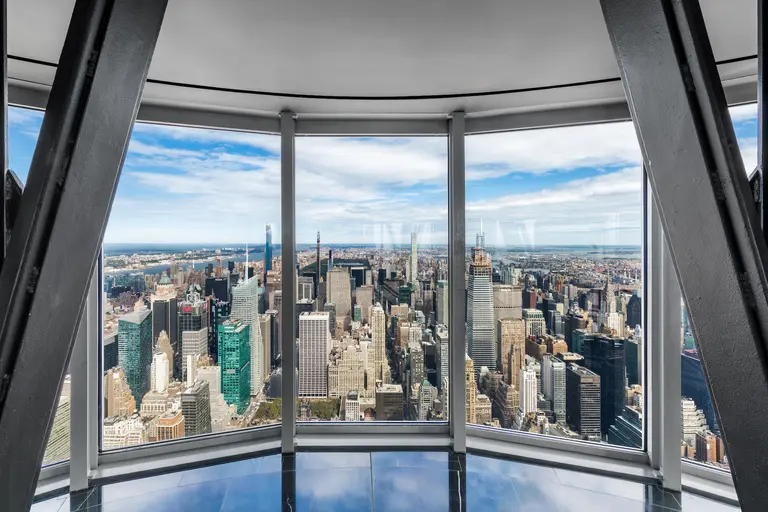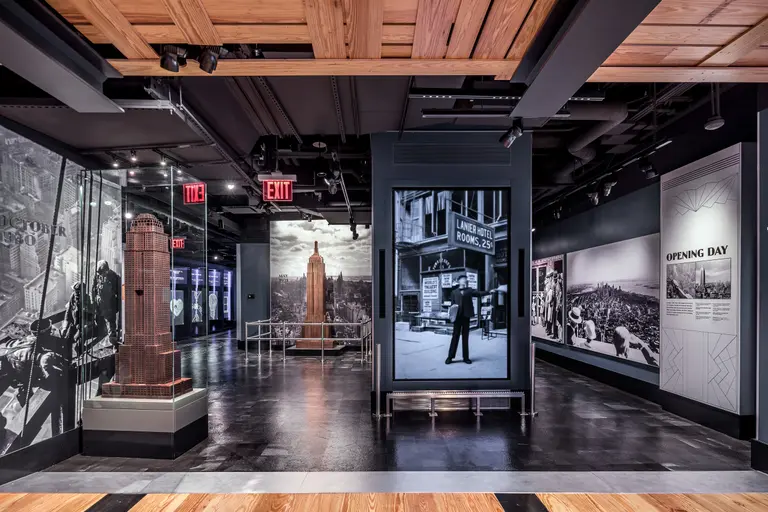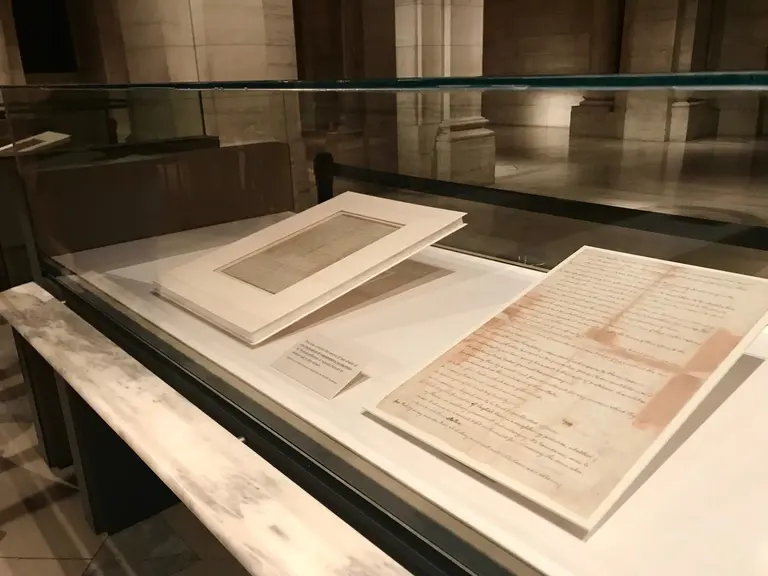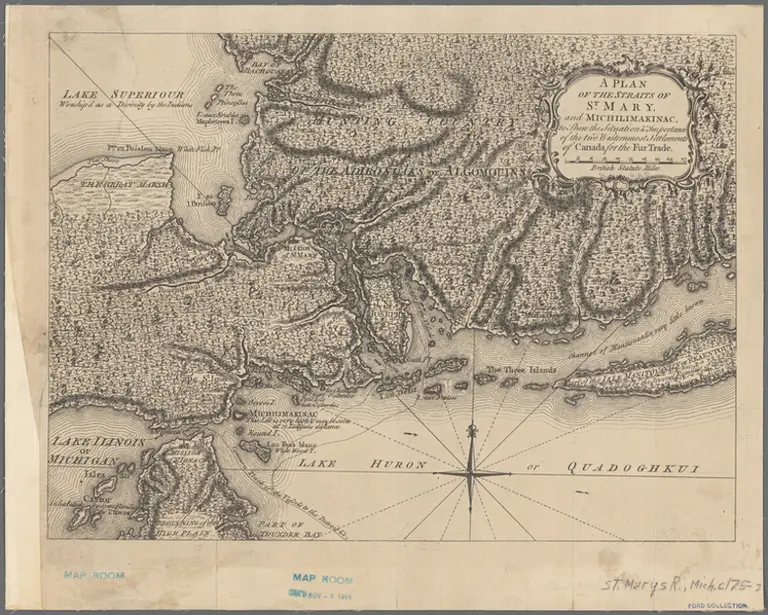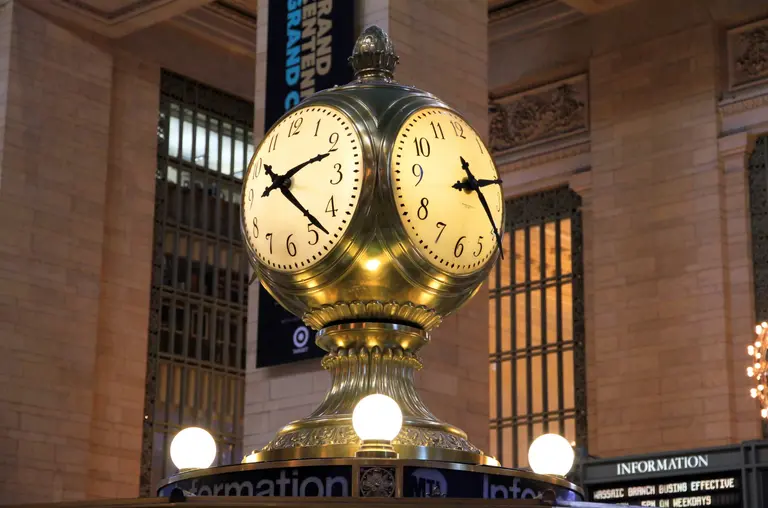The Country’s First Botanic Garden Was on 20 Wooded Acres at Today’s Rockefeller Center
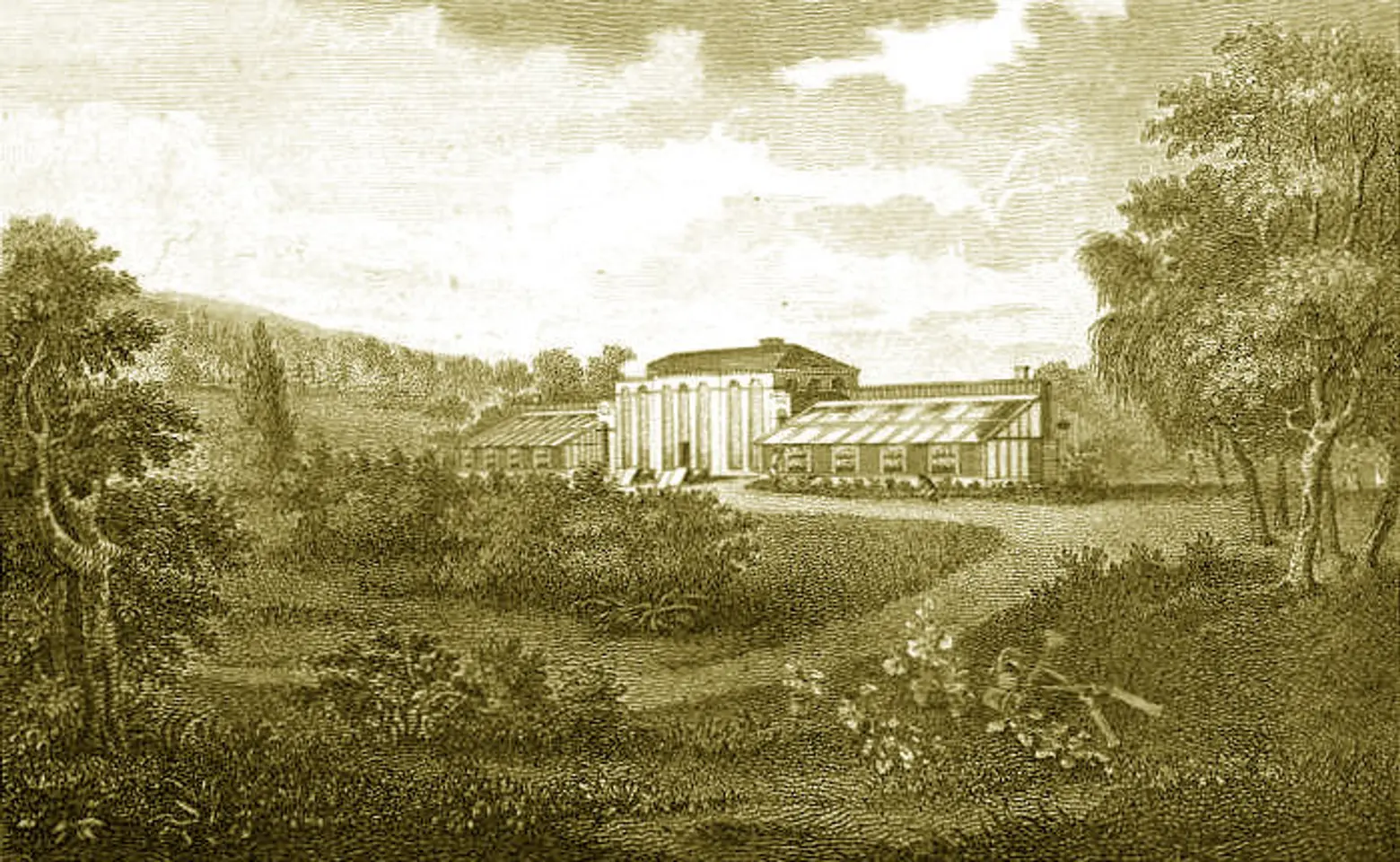
View of Elgin Botanic Garden in 1801
Today, New Yorkers get to enjoy lush landscapes and beautiful plantings at the 250-acre New York Botanical Garden and the 52-acre Brooklyn Botanic Garden, but these outdoor oases weren’t founded until 1891 and 1910, respectively. About 100 years prior, a public botanic garden sprouted up on 20 acres of land at what is today Rockefeller Center, and it was the first such garden in the nation.
Elgin Botanic Garden was founded in 1801 by Dr. David Hosack, a physician, botanist, and educator, perhaps best known for serving as the doctor to Alexander Hamilton after his duel with Aaron Burr in 1804. He used his own money to purchase and landscape the grounds, and by 1805 it was home to more than 1,500 plant species, which he studied for medicinal purposes.
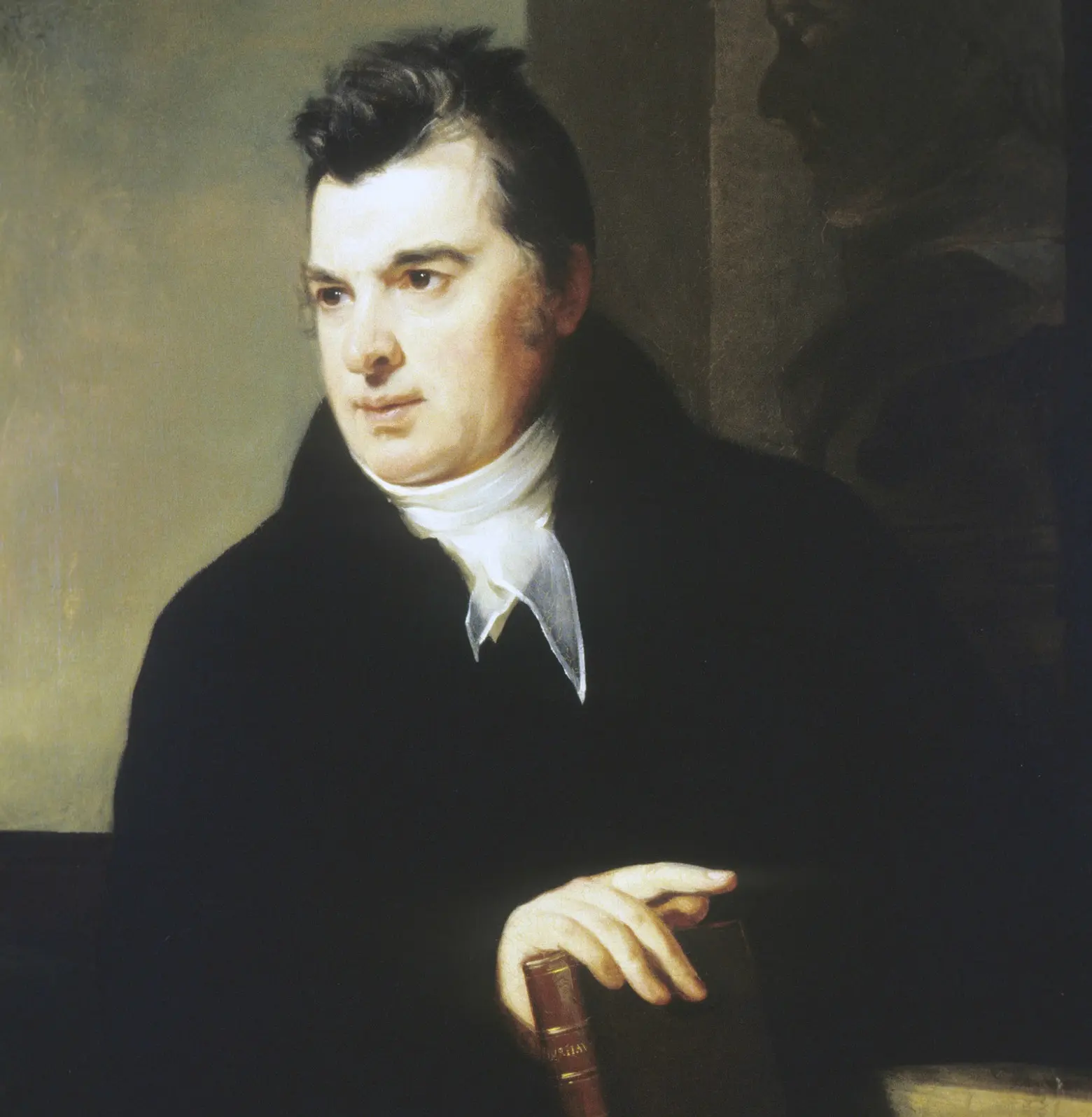
Portrait of David Hosack in 1815, courtesy of the Winterthur Museum, Garden & Library
David Hosack was born in New York City in 1769. He was educated in medicine at Columbia University, the University of Pennsylvania, and Princeton University, and later went to Edingurgh and London to further his knowledge of botany. Here, he spent much time in the botanical gardens of Europe and became one of the most well-versed on the subject in the U.S.
Upon his return to New York, he became the Professor of Botany and Materia Medica at Columbia College, while also practicing privately. But this time was quite tragic for the doctor, as his son, wife, and newborn child all died simultaneously. In 1795 and 1798, New York was also hit with the yellow fever epidemic, and all of these events spurred him to focus on education and care for women and children. He co-founded the American Academy of Fine Arts, the New York Historical Society, and Bellevue Hospital.
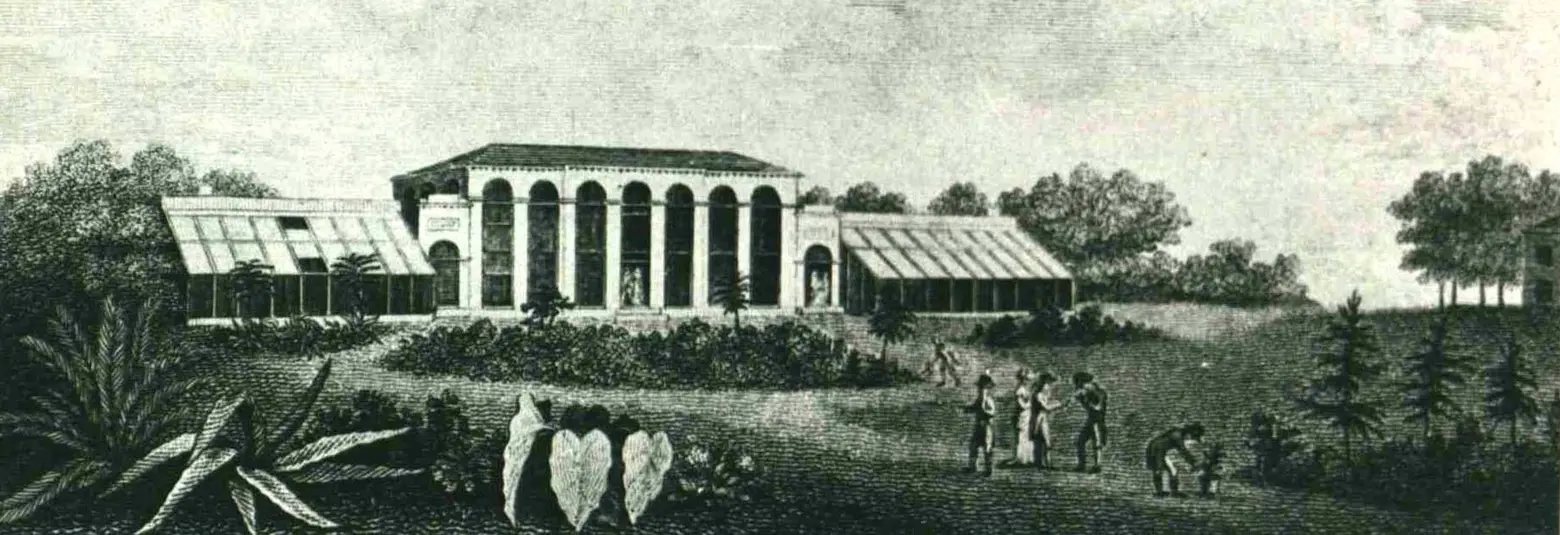
View of Elgin in 1810 from the Medical Repository Volume 13
When Hosack established Elgin botanical garden in 1801, he modeled it after those he saw in England (he was one of the first to bring European-style landscape architecture to America) and named it after his father’s home of Elgin, Scotland. Present-day Rockefeller Center was then nearly four miles north of the city limit, so it was still rural and full of rolling hills and forests. Elgin occupied the land bound by today’s West 47th and 51st Streets and Fifth and Sixth Avenues. It included a herbarium, conservatory, and hothouses (heated greenhouses) and was surrounded by a stone wall.
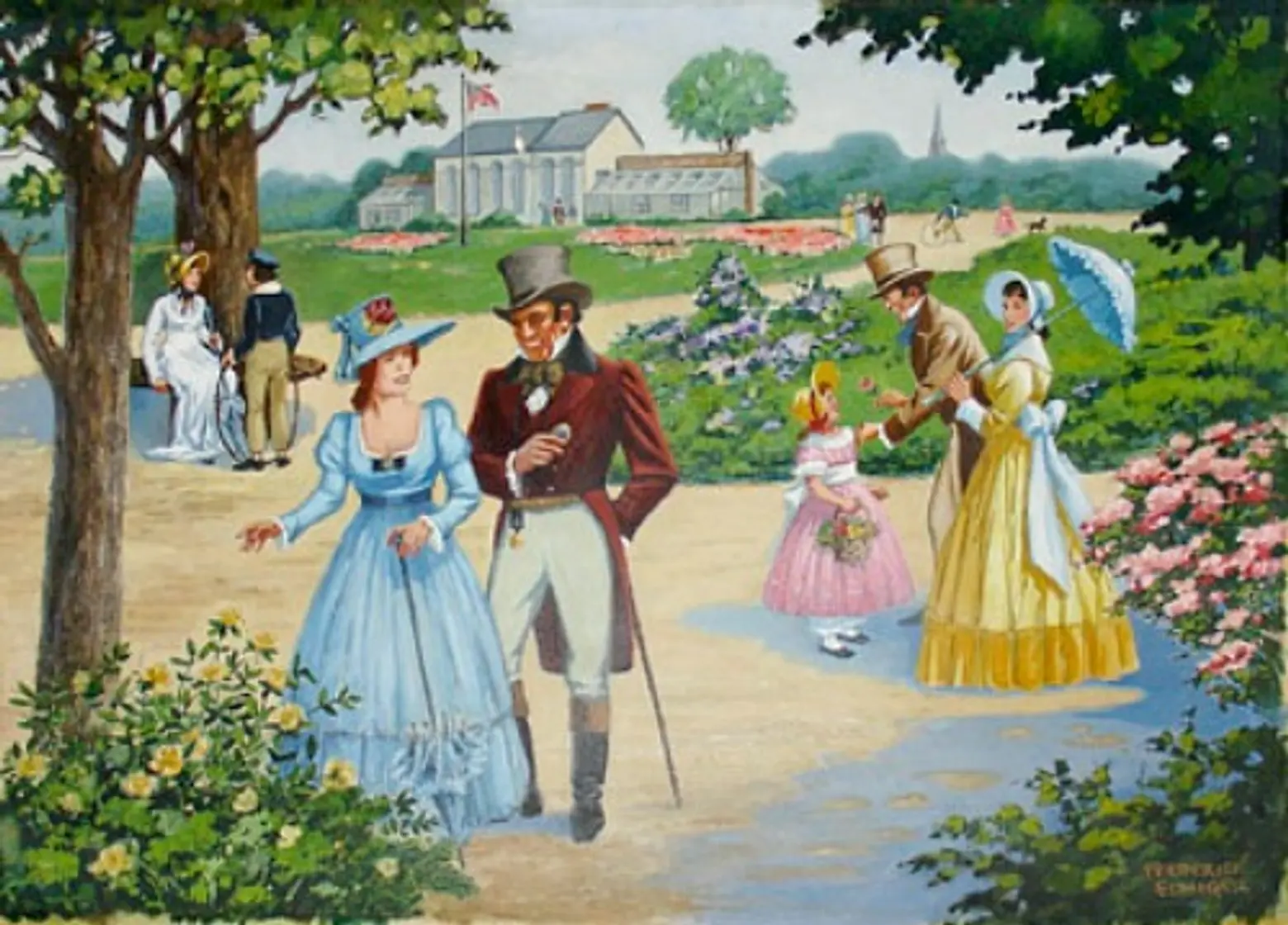 Painting of Elgin by Frederick Elmiger, via George Glazer Gallery
Painting of Elgin by Frederick Elmiger, via George Glazer Gallery
At first, the intention was to grow and study North American herbal plantings, but after yellow fever research supported foreign medicinal plants, Hosack imported and planted those in 1803, which included the first instance of an apple tree in the country. At this time, pharmacology was rooted in plants, so Elgin was central to the study for students and doctors. For this reason, in 1806, Hosack published a complete catalogue of all species in the garden, which had then grown to 2,000, including 200 different grasses, ginger, sugar cane, citrus trees, roses, jasmine, and hibiscus, just to name some. At the end of each spring semester, he held a strawberry festival for his students so they could appreciate botany in both practical and theoretical terms.

A plaque at Rockefeller Center, via NYBG
By 1811, Hosack was involved with establishing and running Rutgers Medical College, and though it was a short-lived endeavor, it left him without the time or money needed to continue with Elgin. Unable to obtain state funding to maintain the garden as an educational resource, he sold the property to New York at a $35,000 loss (roughly $500,000 today). In 1814, the legislature gave the land to Columbia College with the idea that the school would move there from its downtown location. That never occurred, and the garden became abandoned and run-down until Columbia sold the land to John D. Rockefeller Jr. in the 1920s. When Hosack passed away in 1835 from a stroke, he was one of the city’s most prominent citizens, and therefore was buried at the New York Marble Cemetery.
RELATED:
